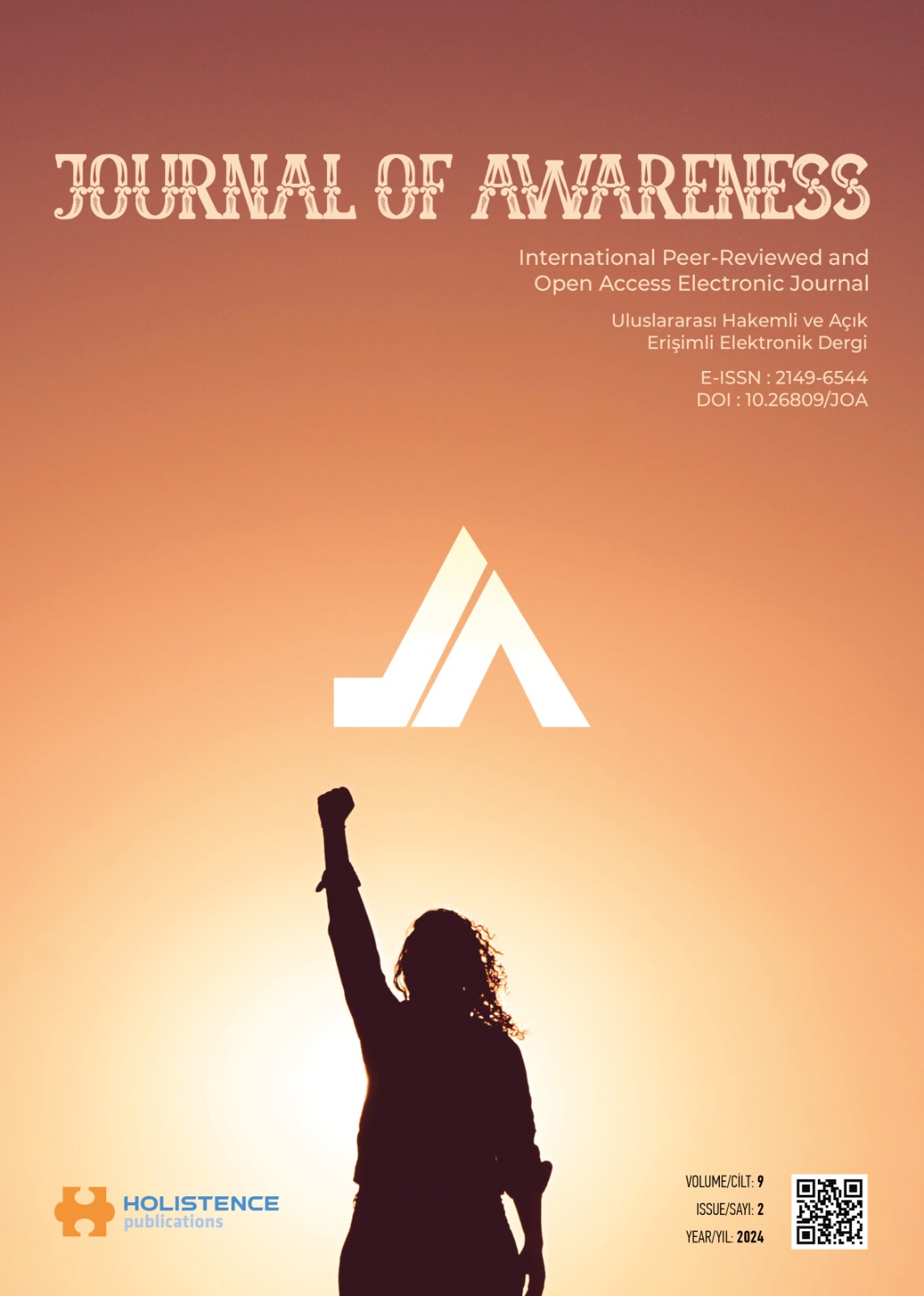The role of industrial design in Turkish medical device design processes within the scope of innovation networks
DOI:
https://doi.org/10.26809/joa.2292Keywords:
Industrial Design, Medical Device Design Process, Turkish Medical Device Ecosystem, Innovation ModelsAbstract
This study aims to examine the medical device design process in which interdisciplinary interaction is intense within the framework of innovative network structures. It is the first study to examine the role of industrial design in design processes in the domestic medical device industry through network structures that support innovation. This research was conducted to analyse the relationship between R&D and design activities in the domestic medical device industry and innovation, the use of external resources in design processes and the collaborations made. All these activities aim to highlight the relationships between stakeholders, government policies and important elements in the health ecosystem.
The study includes a two-stage field study in line with the conceptual framework. The first phase is referred to as fieldwork and includes interviews with 57 domestic medical device manufacturers and seven sector-specific stakeholders. This field study includes providing information about the processes and collaborations of domestic medical device manufacturers, following their developments and conducting periodic interviews. This information formed the basis of the second phase of case studies. Case analyses of 8 domestic medical device design processes identified within the scope of the study were included. The research findings showed that localisation and current medical device processes are P&D oriented, competition-oriented partnerships are increasing, traditional user research methods and industrial design activities are used more and outsourced in innovative network structures.
The results of the study reveal that the inclusion of industrial design in innovation network structures has a positive impact on innovation outputs. In addition, it has been revealed that there are deficiencies in multidisciplinary working culture, innovation activities of companies that cooperate on a global scale are more and project-oriented strategies should be determined.
Downloads
References
ACKLIN, C. (2010). Design-Driven Innovation Process Model. The Design Management Institute, 50–61.
ALAGUMALAI, V., KADAMBI, P., & APPAJI, A. (2019). Interdisciplinarity in New Product Development in an Indian MedTech Perspective: Gap and the Solution. Health and Technology, 9(5), 817–827. https://doi.org/10.1007/s12553-019-00344-1
ATA, A. B. (2018). Sağlık Teknolojileri Patent Verileri Analizi.
ATASEVER, M. (ed), & Karaca, Z. (2017). Türkiye Tıbbi Cihaz Sektör Analizi.
BATTISTELLA, C., BİOTTO, G., & de TONİ, A. F. (2012). From design driven innovation to meaning strategy. Management Decision, 50(4), 718–743. https://doi.org/10.1108/00251741211220390
BERENDS, H., REYMEN, I., STULTİËNS, R. G. L., & PEUTZ, M. (2011). External designers in product design processes of small manufacturing firms. Design Studies, 32(1), 86–108. https://doi.org/10.1016/j.destud.2010.06.001
BERTOLA, P., & TEIXEIRA, J. . (2003). Design as a knowledge agent. Design Studies, 24(2), 181–194. https://doi.org/10.1016/S0142-694X(02)00036-4
BROWN, A., DIXON, D., EATOCK, J., & MEENAN, B. J. (2008). A Survey of Success Factors in New Product Development in the Medical Devices Industry. IEEE International Engineering Management Conference, 1–5. https://doi.org/10.1109/IEMCE.2008.4617987
CHATTERJİ, A. K., & FABRIZIO, K. R. (2014). Using users: When does external knowledge enhance corporate product innovation? Strategic Management Journal, 35, 1427–1445. https://doi.org/10.1002/smj.2168
CHILUKURİ, S., GORDON, M., & MUSSO, C. (2010). Design to value in medical devices. McKinsey Company.
CLARKSON, D. M. (2017). Medical Device Guidebook: A browser information resource for medical device users. Medical Engineering and Physics, 41, 97–102. https://doi.org/10.1016/j.medengphy.2017.01.013
DEMİREL, Y., & TOHUM, E. U. (2017). KOBİ’lerdeki Yenilik Uygulamaları ve Yenilik Engellerinin Belirlenmesi ve Analizi Üzerine Bir Araştırma. Kastamonu Üniversitesi İktisadi ve İdari Bilimler Fakültesi Dergisi, 17(3), 7–27.
DU PREEZ, N. D., & LOUW, L. (2008). A framework for managing the innovation process. In PICMET ’08 - 2008 Portland International Conference on Management of Engineering & Technology (pp. 546–558). IEEE. https://doi.org/10.1109/PICMET.2008.4599663
FDA. (2016). Applying Human Factors and Usability Engineering to Medical Devices. U.S.: Center for Devices and Radiological Health, Food and Drug Administration. https://doi.org/10.1177/1071181311551334
GALANAKIS, K. (2006). Innovation process. Make sense using systems thinking. Technovation, 26(11), 1222–1232.https://doi.org/10.1016/j.technovation.2005.07.002
GALINDO-RUEDA, F., & MİLLOT, V. (2015). Measuring Design and its Role in Innovation”. OECD Science, Technology and Industry Working Papers, 1–51. https://doi.org/10.1787/5js7p6lj6zq6-en
HARTE, R., GLYNN, L., RODRÍGUEZ-MOLINERO, A., BAKER, P. M., SCHARF, T., QUINLAN, L. R., & ÓLAİGHİN, G. (2017). A Human-Centered Design Methodology to Enhance the Usability, Human Factors, and User Experience of Connected Health Systems: A Three-Phase Methodology. JMIR Human Factors, 4(1), e8. https://doi.org/10.2196/humanfactors.5443
HERMAN, W. A., & DEVEY, G. B. (2011). Future Trends in Medical Device Technologies: A Ten-Year Forecast. Food and Drug Administration, Center for Devices and Radiological Health. Retrieved from https://www.google.com/search?client=safari&rls=en&q=Future+Trends+in+Medical+Device+Technologies:+A+Ten-Year+Forecast&ie=UTF-8&oe=UTF-8
HERTENSTEIN, J. H., PLATT, M. B., & VERYZER, R. W. (2005). The impact of industrial design effectiveness on corporate financial performance. Journal of Product Innovation Management, 22(1), 3–21. https://doi.org/10.1111/j.0737-6782.2005.00100.x
HINSCH, M. E., STOCKSTROM, C., & LÜTHJE, C. (2014). User innovation in techniques: A case study analysis in the field of medical devices. Creativity and Innovation Management, 23(4), 484–494. https://doi.org/10.1111/caim.12088
HOBDAY, Michael. (2005). Firm-level innovation models: Perspectives on research in developed and developing countries. Technology Analysis and Strategic Management, 17(2), 121–146. https://doi.org/10.1080/09537320500088666
HOBDAY, Mike, BODDINGTON, A., & GRANTHAM,. (2011). An innovation perspective on design: Part 1. Design Issues, 27(4), 5–15. https://doi.org/10.1162/DESI_a_00101
HOBDAY, Mike, BODDINGTON, A., & GRANTHAM, A. (2012a). An innovation perspective on design: Part 2. Design Issues, 28(1), 18–29. https://doi.org/10.1162/DESI_a_00137
HOBDAY, Mike, BODDINGTON, A., & GRANTHAM, (2012b). Policies for design and policies for innovation: Contrasting perspectives and remaining challenges. Technovation, 32(5), 272–281. https://doi.org/10.1016/j.technovation.2011.12.002
HOURD, P. C., & WILLIAMS, D. J. (2008). Results from an exploratory study to identify the factors that contribute to success for UK medical device small- and medium-sized enterprises. Proceedings of the Institution of Mechanical Engineers, Part H: Journal of Engineering in Medicine, 222(5), 717–735.
ISO. (2015). EN 62366-1:2015; Medical devices engineering to medical devices: Application of usability engineering to medical devices BS.
KAZADI, K., LIEVENS, A., & MAHR, D. (2016). Stakeholder co-creation during the innovation process: Identifying capabilities for knowledge creation among multiple stakeholders. Journal of Business Research, 69(2), 525–540. https://doi.org/10.1016/j.jbusres.2015.05.009
KİPER, M. (2018). Dünya’da ve Türkiye’de Tıbbi Cihaz Sektörü ve Stratejisi Önerisi. Ankara.
KIRKIRE, M. S., & RANE, S. B. (2015). Evaluation of success factors for medical device development using grey DEMATEL approach. Journal of Modelling in Management, 12(2), 204–223. https://doi.org/10.1108/JM2-09-2015-0062
KO, K. H. K., DUNN, J. L., LAHOUD, D., NUSEM, E., STRAKER, K., & WRIGLEY, C. (2019). Exploring the role of Design in the context of Medical Device Innovation. Conference Proceedings of the Academy for Design Innovation Management, 2(1). https://doi.org/10.33114/adim.2019.03.303
KODAMA, M. (2018). Collaborative Dynamic Capabilities for Service Innovation - Creating a New Healthcare Ecosystem. https://doi.org/10.1007/978-3-319-77240-0
KRUCOFF, M. W., BRINDIS, R. G., HODGSON, P. K., Mack, M. J., & Holmes, D. R. (2012). Medical Device Innovation: Jcin, 5(7), 790–796.
LANDONI, P., DELL’ERA, C., FERRALORO, G., PERADOTTO, M., Karlsson, H., & Verganti, R. (2016). Design Contribution to the Competitive Performance of SMEs: The Role of Design Innovation Capabilities. Creativity and Innovation Management, 25(4), 484–499. https://doi.org/10.1111/caim.12165
MARINOVA, D., & PHILLIMORE, J. (2003). Models of Innovation. In L. V. Shavinina (Ed.), TheInternational Handbook on Innovation (1., pp. 44–53). Oxford: Elsevier Science Ltd. Retrieved from https://books.google.com.tr/books?id=-xg-0-XdcIoC&printsec=frontcover&hl=tr&source=gbs_ge_summary_r&cad=0#v=onepage&q&f=false
MEDINA, L. A., KREMER, G. E. O., & WYSK, R. A. (2012). Supporting medical device development: A standard product design process model. Journal of Engineering Design, 24(2), 83–119. https://doi.org/10.1080/09544828.2012.676635
MICLĂUŞ, T., VALLA, V., KOUKOURA, A., NİELSEN, A. A., Dahlerup, B., Tsianos, G. I., & Vassiliadis, E. (2019). Impact of Design on Medical Device Safety. Therapeutic Innovation and Regulatory Science, (0123456789). https://doi.org/10.1007/s43441-019-00022-4
MINDER, B., & HEIDEMANN LASSEN, A. (2018). The Designer as Facilitator of Multidisciplinary Innovation Projects. Design Journal, 21(6), 789–811. https://doi.org/10.1080/14606925.2018.1527513
MONEY, A. G., BARNETT, J., KULJIS, J., CRAVEN, M. P., Martin, J. L., & Young, T. (2011). The role of the user within the medical device design and development process: Medical device manufacturers’ perspectives. BMC Medical Informatics and Decision Making, 11(1). https://doi.org/10.1186/1472-6947-11-15
MOULTRIE, J., CLARKSON, P. J., & PROBERT, D. (2007). Development of a design audit tool for SMEs. Journal of Product Innovation Management, 24(4), 335–368. https://doi.org/10.1111/j.1540-5885.2007.00255.x
MOZOTA, B. B. (2010c). The Four Powers of Design: A Value Model in Design Management. Design Management Review, 17(2), 44–53. https://doi.org/10.1111/j.1948-7169.2006.tb00038.x
OKA. (2012). Samsun medikal sanayi sektörünün (MESAS) mevcut durum analizi ve medikal sanayi sektörü ihtisas organize sanayi bölgesi (OSB) fizibilite raporu.
OZYURT E.M. (2021). Türkiye Tibbi Cihaz Ekosisteminde Tasarim Faaliyetlerinin Yenilikçi Ağ Yapilari Kapsaminda İncelemesi. Doktora, MSGSÜ, Fen Bilimleri Enstitüsü.
PORTER, M. E. (1990). Towards a Dynamic Theory of Strategy. Strategic Management Journal, 12, 95–117.
PRIVITERA, M. B., SOUTHEE, D., & EVANS, M. (2015). Collaborative Design Processes in Medical Device Development. The Value of Design Research - European Academy of Design Conference, (11), 1–12.
RAVASI, D., & STIGLIANI, I. (2012). Product Design: A Review and Research Agenda for Management Studies. International Journal of Management Reviews, 14(4), 464–488. https://doi.org/10.1111/j.1468-2370.2012.00330.x
REYES, I. I., MENDOZA FRANCO, G. A., & RODRÍGUEZ MORALES, Á. L. (2020). A guide to drive medical devices development through human factors inclusion: Building a value proposition for local projects. Advances in Intelligent Systems and Computing, 957(January), 245–253. https://doi.org/10.1007/978-3-030-20451-8_24
ROPER, S., VAHTER, P., & LOVE, J. H. (2013). Externalities of openness in innovation. Research Policy, 42(9), 1544–1554. https://doi.org/10.1016/j.respol.2013.05.006
ROPER, S., MICHELI, P., LOVE, J. H., & VAHTER, P. (2016). The roles and effectiveness of design in new product development: A study of Irish manufacturers. Research Policy, 45(1), 319–329. https://doi.org/10.1016/j.respol.2015.10.003
ROTHWELL, R. (1992). Developments Towards the Fifth Generatin model of Innovation. Technology Analysis & Strategic Management, 1(1), 73–75.
SAĞLIK BAKANLIĞI. (2017). Türki̇ye Tıbbi Cihaz Sektörü Strateji Belgesi̇ ve Eylem Plani (2017-2021).
SHAH, S. G. S., & ROBİNSON, I. (2008). Medical device technologies: Who is the user? International Journal of Healthcare Technology and Management, 9(2), 181–197. https://doi.org/10.1504/IJHTM.2008.017372
SHLUZAS, L. A., PIETZSCH, J. B., PATÉ-CORNELL, M. E., YOCK, P. G., & LİNEHAN, J. H. (2009). The Iterative Nature of Medical Device Design. In International
STIRLING, C., & SHEHATA, A. (2016). Collaboration — The Future of Innovation for the Medical Device Industry. Kpmg. Retrieved from https://assets.kpmg.com/content/dam/kpmg/pdf/2016/05/the-future-of-innovation-for-the-medical.pdf
ŞEREFOĞLU, C. (2019). Ankara Bölgesel Yenilik Stratejisi. Ankara. https://doi.org/10.1017/CBO9781107415324.004
T.C KALKINMA BAKANLIĞI. (2018). On Birinci Kalkınma Planı (2019-2023)-Sağlık Endüstrilerinde Dönüşüm Özel İhtisas Komisyonu Raporu. Retrieved from https://www.sbb.gov.tr/wp-content/uploads/2020/04/SaglikEndustrilerindeDonusumOzelIhtisasKomisyonuRaporu.pdf
T.C STRATEJİ VE KALKINMA BÜTÇE BAŞKANLIĞI. (2023). On İkinci Kalkınma Planı (2024-2028)- https://www.sbb.gov.tr/wp-content/uploads/2020/04/SaglikEndustrilerindeDonusumOzelIhtisasKomisyonuRaporu.pdf
TİTCK (2018), Stratejik Planı. Ankara.
TROTT, P. (2012). Innovation Management and New Product Development [Englisch]. Retrieved from http://www.amazon.de/Innovation-Management-New-Product-Development/dp/0273736566/ref=sr_1_1?ie=UTF8&qid=1376938261&sr=8-1&keywords=Innovation+management+and+new+product+development
TSAI, K. H. (2009). Collaborative networks and product innovation performance: Toward a contingency perspective. Research Policy, 38(5), 765–778. https://doi.org/10.1016/j.respol.2008.12.012
TÜRKIYE’DE SAĞLIK SEKTÖRÜ AR-GE VE MÜHENDISLIK KABILIYETLERI RAPORU, Sistem Global ve T.C. cumhurbaşkanlığı Yatırım Ofisi, 2021.
Url-1: https://www.resmigazete.gov.tr/eskiler/2023/11/20231101M1-1-1.pdf (Erişim tarihi: 01 Kasım 2023)
Url-2: https://echalliance.com/ecosystems/ (Erişim tarihi: 01 Kasım 2023)
Url-3 https://titck.gov.tr/storage/Archive/2021/contentFile/Tıbbi%20Cihaz%20Yönetmeliği_91969c4b-58b3-48cb-adfb-03c2cacd5632.pdf (Erişim tarihi: 01 Kasım 2023)
Url-4 In Vitro Tanı Amaçlı Tıbbi Cihaz Yönetmeliği https://titck.gov.tr/storage/Archive/2021/contentFile/n%20Vitro%20Yönetmeliği_3075f8b5-aa8a-4a76-839a-e8a02439bac2.pdf (Erişim tarihi: 01 Kasım 2023)
Url-5:https:/www.titck.gov.tr/duyuru/yeni-tibbi-cihaz-duzenlemeleri-yururluge-girmesi-14062021145720 (Erişim tarihi: 01 Kasım 2023)
Url-6: https://titck.gov.tr/storage/Archive/2020/contentFile/Bir%20Tıbbi%20Cihaz%20Tasarladım%20Ne%20Yapmalıyım_8e7a5af5-9aa9-4bce-b9ba-dd110ab7d827.pdf (Erişim tarihi: 01 Kasım 2023)
Url-7 https://www.seis.org.tr/cms-uploads/2022/03/Tibbi_Cihaz_Sektor_Raporu.pdf (Erişim tarihi: 01 Kasım 2023)
ÜNSAL, T. (2011). İmalat Sanayi KOBİ’lerde Ürün Geliştirme ve Tasarım Sorunu. In Endüstride, Tasarımda, Eğitimde 40 yıl.
ÜNSAL, T. (2016). Küresel Ürün Geliştirme ve Tasarım. Tasarım + Kuram, 5(8), 43–43. https://doi.org/10.23835/tasarimkuram.240863
VERGANTI, R. (2009). Design-Drive Innovation. Harvard Business School Publishing Corporation.
YODA, T. (2016). The effect of collaborative relationship between medical doctors and engineers on the productivity of developing medical devices. R and D Management, 46, 193–206. https://doi.org/10.1111/radm.12131
Downloads
Published
How to Cite
Issue
Section
License
Copyright (c) 2024 Holistence Publications

This work is licensed under a Creative Commons Attribution 4.0 International License.
When the article is accepted for publication in the Journal of Awareness, authors transfer all copyright in the article to the Rating Academy Ar-Ge Yazılım Yayıncılık Eğitim Danışmanlık ve Organizasyon Ticaret Ltd. Şti.The authors reserve all proprietary right other than copyright, such as patent rights.
Everyone who is listed as an author in this article should have made a substantial, direct, intellectual contribution to the work and should take public responsibility for it.
This paper contains works that have not previously published or not under consideration for publication in other journals.











